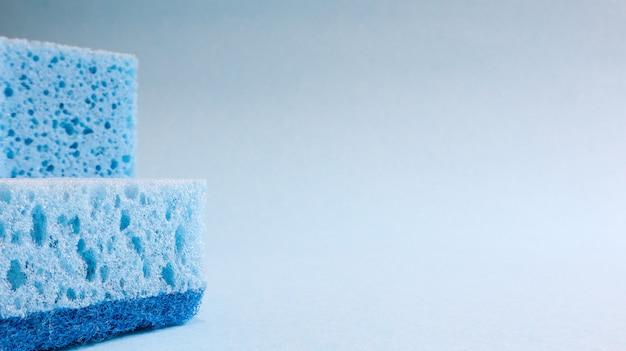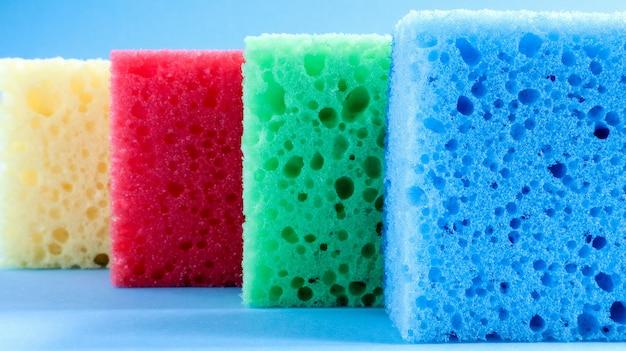In a world where culinary trends are constantly evolving, it’s not uncommon to come across food enthusiasts who are willing to explore the unconventional. From exotic spices to peculiar ingredients, our curiosity seems to know no bounds. But what about those who go beyond the boundaries of traditional food and indulge in the consumption of non-edible items? That’s right, we’re talking about pica – an eating disorder characterized by a persistent craving for substances that aren’t food.
One such non-food substance that has garnered attention in recent years is white dirt. Referred to by various names such as kaolin clay, white clay, or chalk, this powdery material has become a subject of curiosity for many. But what exactly is white dirt made of? Is it safe to consume? And why do some individuals develop a strong desire to eat it? Join us as we dive into the fascinating world of white dirt, exploring its composition, the potential risks associated with its consumption, and the reasons behind this unusual craving.
What Is White Dirt Made Of
White dirt, also known as chalk or kaolin, is a fascinating substance that may leave you wondering what on earth it’s made of. If you’ve ever come across this mysterious material, fear not — I’m here to shed some light on the matter!
The Earth’s Secret Recipe
White dirt is predominantly composed of a mineral called kaolinite, which is a type of clay. This clay derives its distinctive color from the high concentration of aluminum it contains. But don’t worry, you won’t find aluminum foil buried in the ground!
Mother Nature’s Flour
Kaolinite is formed through a natural process of weathering and erosion. Over countless years, rocks rich in aluminum silicate minerals break down due to the forces of wind, water, and time. This breakdown gives way to the formation of kaolinite, the key ingredient in white dirt.
Digging for Kaolin
In order to obtain white dirt in large quantities, miners embark on a quest to search for deposits of kaolin. These deposits are often found deep beneath the Earth’s surface, hiding away like a treasure waiting to be discovered. Once located, the kaolin is carefully extracted, like a well-guarded secret finally revealed.
The Art of Refining
Once the kaolin is brought to the surface, it undergoes a refining process to remove impurities and transform it into the powdery substance we commonly see as white dirt. This process involves washing, drying, and pulverizing the mineral until it achieves a consistency comparable to fluffy clouds.
White Dirt’s Versatile Nature
What makes white dirt even more intriguing is its versatility. Beyond its traditional uses in ceramic production and as an additive in skincare products, it also plays a role in the realm of culinary arts. Yes, you read that correctly! White dirt is sometimes used as a natural food additive, providing a unique texture and absorbing excess moisture like a pro.
Ingesting White Dirt? Wait, What
Before you rush to sprinkle white dirt on your gourmet dish, it’s important to note that not all white dirt is edible. Some variants may contain impurities or additives, so always exercise caution and ensure the product you’re using is explicitly labeled for culinary use. Remember, not all dirt is created equal!
So, What’s the Verdict
In conclusion, white dirt is predominantly made of kaolinite, a clay-like mineral enriched with aluminum. This fine powder is obtained from underground deposits through a meticulous extraction and refining process. With its diverse range of applications, white dirt proves to be more than just an ordinary substance — it’s a testament to the wonders of nature’s geological creativity.
FAQ: What Is White Dirt Made Of
Welcome to our comprehensive FAQ section covering everything you need to know about white dirt. Here, we’ll address your burning questions, debunk myths, and provide you with some fascinating insights. Let’s dive right in!
What Exactly Is White Dirt
White dirt, also known as kaolin clay or white clay, is a type of sedimentary clay found in various parts of the world. It is composed mainly of the mineral kaolinite and is typically soft and chalk-like in texture. This unique clay has been used for centuries in different cultures for its various properties and benefits.
Is It Safe to Eat White Clay
While eating unconventional substances may sound peculiar, consuming small amounts of edible white clay is generally considered safe for most people. Kaolin clay, like any other clay, is not highly digestible, so it does not provide any nutritional value. However, it is widely used in certain culinary traditions and as a natural remedy for various ailments.
What about Eating Dirt
Ah, the timeless childhood curiosity of munching on dirt! While many kids can’t resist the temptation, it’s worth noting that eating dirt, in general, may not be the wisest culinary choice. Dirt can harbor harmful microbes, parasites, and toxins that could lead to various health issues. So, it’s best to stick to more conventional and safer food options.
Is Eating White Clay Safe During Pregnancy
Pregnancy cravings can lead to some interesting food choices, but when it comes to white clay, it’s essential to exercise caution. While consuming kaolin clay in small quantities is generally regarded as safe, it’s always best to consult with your healthcare provider before indulging in any unconventional cravings during pregnancy. They can give you personalized advice based on your specific situation.
Why Do Some People Crave Clay
Ah, the mysterious world of cravings! While it may seem strange, the craving for clay or other non-food items, known as pica, is not entirely uncommon. Various factors, such as nutrient deficiencies or underlying medical conditions, can contribute to these cravings. If you find yourself yearning for a bite of clay from time to time, it may be worth discussing with a healthcare professional to address any underlying issues.
Can You Eat White Clay Dirt
Technically, yes, but it’s probably not the best idea. While white clay dirt may have some cultural significance or culinary uses in certain regions, it’s essential to recognize that consuming dirt, regardless of color, comes with potential health risks. It’s generally advisable to satisfy your taste buds with safer and more nutritious alternatives.
Is Eating White Clay Bad for You
In moderation, eating white clay is generally considered safe for most individuals. However, it’s important to remember that excessive consumption or indulging in low-quality clay can lead to gastrointestinal discomfort or even blockages. As with anything, it’s all about balance and making informed choices.
Is It Safe to Eat White Dirt
Safety first, folks! While consuming white dirt may be common in certain cultures or traditions, it’s crucial to understand that dirt can contain harmful bacteria, pathogens, or pollutants. It’s always best to prioritize your health and opt for safer food options rather than digging into a plate of dirt.
Does White Dirt Have Germs
Dirt is not exactly the cleanest snack option out there. It can harbor a plethora of germs, bacteria, and other unwanted microorganisms. So, it’s best to keep your white dirt confined to the ground and not on your plate.
Is Chalk Edible
Well, we wouldn’t recommend adding it to your list of culinary delights. While chalk may look superficially similar to white clay, it is not intended for consumption. Chalk is primarily used for writing on blackboards, not satisfying your taste buds.
What Is Down Home Georgia White Dirt
Ah, white dirt with a southern twist! Down Home Georgia White Dirt refers to the edible earth predominantly found in… you guessed it, Georgia! This region has a unique tradition of using this particular white clay in culinary and cultural practices. However, it’s essential to remember that even this delightful delicacy should be consumed in moderation.
Why Do Kids Eat Dirt
Ah, the eternal fascination of little ones with dirt! It’s a natural part of development as they explore their surroundings and engage their senses. However, it’s crucial to ensure that children have access to clean, safe environments to minimize any potential health risks associated with dirt consumption.
What Does Eating Sand Do to Your Body
While sand may seem like an interesting addition to your gastronomic adventures, it’s best avoided. Ingesting sand can irritate your digestive system, potentially leading to discomfort, and, well, let’s just say you won’t find any nutrients buried there.
What Is the Purpose of White Dirt
White dirt has various uses depending on the context. In certain cultures, it is integrated into culinary practices and traditional remedies. Additionally, white clay is commonly used in skincare products due to its absorbent and texture-enhancing properties. However, it is important to understand that its purpose is primarily cultural or cosmetic, rather than nutritional.
Can You Eat Dirt on Vegetables
While a few specks of dirt on your organic carrots may not harm you, it’s always a good idea to make sure your vegetables are properly washed before consuming them. This helps remove any potential contaminants and ensures a safer and cleaner eating experience.
Is Drinking Clay Good for You
While some people swear by the benefits of ingesting clay, it’s important to approach this claim with a skeptical eye. While there is ongoing research on the subject, the consumption of clay, including white clay, should be approached cautiously, and it’s always best to consult with a healthcare professional before adding it to your wellness routine.
We hope this FAQ-style guide has answered your questions about white dirt and its edible qualities. Remember, whether it’s clay or chalk, it’s crucial to make informed choices for your health and satisfy your taste buds with safer, more conventional options. Stay curious, stay healthy!
Disclaimer: The information provided in this article is for educational and informational purposes only. It is not intended as a substitute for professional advice. Please consult with a healthcare professional before making any dietary decisions.
Published on: July 15, 2023

